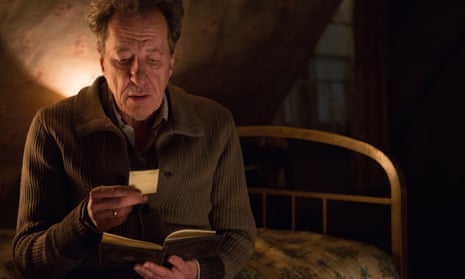It takes courage, not to mention a macabre twist of the imagination, to conceive a novel for young adults narrated by Death. Markus Zusak’s 2005 The Book Thief, the story of a young German girl whose family give shelter to a Jewish refugee during the second world war, became an international bestseller. Yet the most arresting aspect of the novel was the first-person perspective of the Grim Reaper, who turned out not to be particularly grim at all, but rather sardonic, personable and remarkably funny.
Death was always going to be a difficult act to follow; and Zusak has laboured for more than a decade on his subsequent work. At almost 600 pages it shares The Book Thief’s epic weight, but is the first of his novels to be promoted as general fiction, rather than for young adults. The distinction is not immediately apparent, as Zusak pitches the reader into the “terrifically teenaged world” of the Dunbar boys; five fractious, semi-feral brothers living unsupervised in a suburb of Sydney against a backdrop of cheap food, bad movies and badly behaved pets.
The narrator is Matthew, the eldest and apparently the breadwinner (though it is not entirely clear what he actually does to sustain this adult-free household), whose language ranges from mock-heroic to downright cartoonish as he introduces this “family of ramshackle tragedy. A comic book kapow of boys and blood and beasts.” His brothers, in descending order, are Rory, the most pugilistic of the bunch; Henry, who insists on a visual diet of Bachelor Party and similarly dreadful films from the 1980s; Clay, a dark horse who emerges from the shadows to become the novel’s central character; and Tommy, a collector of stray animals including a mule called Achilles, Telemachus the budgie and Hector the cat.

The primary focus falls on the penultimate brother, Clay – the quietest and most enigmatic of the clan, who spends his time obsessively poring over a monograph on Michelangelo or pounding round the track of the derelict athletics stadium behind the house. As his elder brother observes: “Clay was warming up. Truth be told, Clay was always warming up … It bears mentioning that what our brother was training for was as much a mystery to him as it was to us. He only knew he was working and waiting for the day he’d find out.”
That day finally comes around with the unexpected arrival of the boys’ father, whose reappearance is as mysterious as it is unwelcome. Mr Dunbar is never mentioned by name, being referred to exclusively as “the Murderer” (though his crime would appear to be abandonment rather than homicide). Since the death of his wife, Dunbar senior has been living in the outback beside an overflowing river. He now requests the help of his sons to build a bridge.
Clay’s decision to join his father is seen by the rest of the family as an unforgivable betrayal, while the building of the bridge is subject to delays, which along with digressions account for much of the book’s length: “What the hell was he waiting for? When would they start building? Was this bridge procrastination?” It seems clear, however, that the actual construction project is secondary to Zusak’s elaboration of an overarching metaphor; as the bridge not only reconnects a broken family, but also provides a link to the loss of the boys’ mother, Penelope, to cancer.
The chapters detailing the death of Penelope are among the most moving and successfully realised, not least because they allow Zusak’s uniquely laconic and insinuating concept of death to stalk the narrative: “She’d started leaving us that morning and death was moving in. He was perched on the curtain rod. Dangling in the sun. Later, he was leaning, close but casual, an arm draped over the fridge; if he was minding the beer he was doing a bloody good job.”

Throughout The Book Thief the presence of Death is associated with colour, particularly white: “‘Some of you are most likely thinking that white is not really a colour,’ Death maintained. ‘Well I’m here to tell you that it is. White is without question a colour and personally I don’t think you want to argue.’” The same deathly whiteness irradiates the narrative of Clay’s story, as the merciless Sydney sunlight is variously described as “aspirin-white” or “collarbone-white”. Penelope, who emigrated as a teenager from eastern Europe, finds herself oppressed by “the mauling light here. This city. It was so hot and wide and white. The sun was some sort of barbarian, a Viking in the sky.”
You could argue that Zusak has a tendency to overplay the theatrical illumination, as even the act of opening the fridge becomes a physical assault: “From nowhere there was light. It was white and heavy and belted him across the eyes like a football hooligan.” But if The Book Thief was a novel that allowed Death to steal the show, its slightly chaotic, overlong, though brilliantly illuminated follow-up is affirmatively full of life.

Comments (…)
Sign in or create your Guardian account to join the discussion